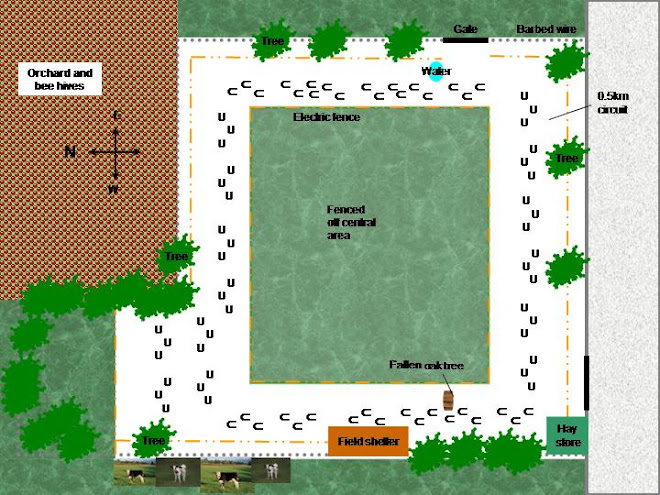and time to collect my thoughts.
Hooves really are a window to your horses health. As mere humans we may not always be that savvy about interpreting the signs, but that is hardly Nature's fault.
Chunky Chap (CC) who is dearly loved and treasured by his carer who has looked for answers to his problems for a very long time. CC had flat, desicated coconut feet with really bad cracks.
Dietary adjustments did much to resolve peripheral issues, but CC's feet were still showing signs of ill health. Very savvy vet (I think I love you! :-) ) identified a problem with blood supply to hind gut. Since that has been treated hooves have blossomed. No longer pancake flat, they are now glossy, hard, fabulous. CC is going well too.
Then there is the Ebony Princess (EP) hooves also signalling problems. The attending is more sceptical and thinks shoes will sort. Attending treats the 'secondary' issues.
EP is no better and from a hoof point of view somewhat worse. Attending who really does have EP's best interest at heart, agrees to owners request for Cushings test.
Despite her youth EP does have Cushings, but now the attending and owner have a chance to treat. Thank goodness owner listened to what EPs hooves were telling her. I'm sad for EP and owner, but now we have a chance to make progress. Let's see how it goes - timewise we have lost best part of a year.
Learn to read your hooves - please - it isn't easy and interpretation is still in its infancy, but if you know just one thing know this. 'If the hooves aren't right than neither is the horse.'
And personally - I think we owe it to our horses to find the problem, and if we can, to fix it. Covering it up or ignoring it shouldn't be an option.
(And I really need to learn how to use my phone properly to post blog entries.)









